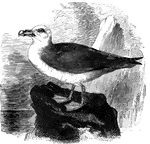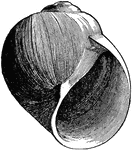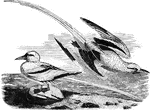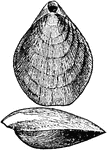Clipart tagged: ‘atlantic’

Alewife
"A North American fish, Clupea Vernalis, from 8 to 10 inches long, resembling a small shad, but much…
Biscayne Bay
An illustration of Biscayne Bay, is a lagoon that is approximately 35 miles (56 km) long and up to 8…
Scabbard Fish
Lepidopus caudatus. "1. A fish of the family Lepidopodidae, Lepidopus caudatus,of the Mediterranean…

Mussel
Modiola plicatula, a characteristic mussel of the tidal flats and salt-meadow streams of the…

Fulmar Petrel
Distributed throughout the northern regions of the Atlantic, the fulmar petrel prefers to nest in the…

Northern Moon Snail
Lunatia heros or the Northern moon snail, the common salt-water snail of the Atlantic coast.

Tropicbird
Notable for its lengthy tail-feathers, the tropic bird inhabits the tropical regions of the Atlantic…


